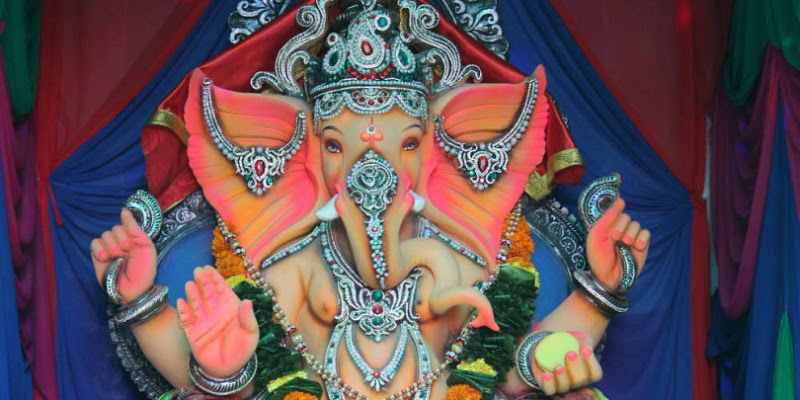Every aspect of creation resides within the human body. The body being much more than what we see in the mirror, these aspects can be accessed through certain practices from ashtanga yoga and sanatan kriya. If you ask a yogic practitioner about the body, he will describe certain channels and energy centres and also specific forms and shapes associated with different parts of the body. If you happen to attend a vedic yagya, you might see these forms and shapes in the agni. Or if you are in the presence of an evolved guru as he chants certain mantras, you could get the experience. Take for example, the form of Ganapati.
We all identify Ganesha as a deity with an elephant head and a pot belly. Ganesha is the energy closest to physical creation. In the human body, it corresponds roughly to the base of the spine, which is the location of mooladhar chakra, responsible for our physical needs. Mooladhar is the highest chakra in animals, the exit point from the yoni of an animal and the lowest in humans, the entry point. The journey of human being begins at the mooladhar to culminate at sahasrara, which is the movement from human yoni to higher forms and lokas.
‘Gan’ means people and ‘esh’ means the Supreme, hence Ganesha means the Supreme Deity, the first energy to grant access to higher dimensions, also known as the pratham pujya. It is the first energy that a spiritual aspirant is given experience of as he embarks on the journey of spirit under guidance of a guru. Just like it is futile to talk of God to a hungry person, whose immediate concern is his next meal, it is of no use to talk of yogasiddhis to an average individual who is desirous of growth only in physical aspects – better job, better health, and better relationships. Only when their stomach is full and their hunger is appeased, will they think of taking the next step.
The elephant-head symbolises supreme intelligence. The human body with the big belly symbolises a reservoir of energy stored in the manipoorak chakra at the navel. Ganesha is the child of Mahadev, the Supreme purush, and Adi Shakti, the Mother of Creation. Riddhi or prosperity and siddhi or spiritual powers are married to Ganapati, indicating that Ganapati is energy that bestows spiritual as well as worldly boons, confirming the shastric philosophy that attainment of worldly pleasures is essential for attainment of higher realms leading to moksha or liberation.
In sanatan kriya, the first sadhana or practice given to a sadhaka is Ganapati sadhana and Ganapati jaap, which opens the doorway to lokas beyond the physical dimension. The jaap is received from your guru, who channelises the energy into mantra, paving the route for its siddhi.
Those seekers who have been seriously practising various mantra siddhis, have had physical manifestations of various gods. A sadhaka is given a specific count of jaap to be completed in the stipulated time as well as jaap maala (rosary) which is moved forward as one does the jaap daily. It is important to move the maala beads while chanting. Then, the shakti of the mantra gets accumulated in the maala and its meru. The various tantric mantras have their utility later in sadhana; use them for a specific purpose and it happens through the meru.


Leave A Comment